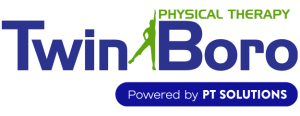Background & Etiology
A calf strain or pull is an injury to the muscles of the leg. There are three main muscles in the lower leg, two gastrocnemius muscles and the soleus muscle, which run from the knee to the ankle. A strained muscle occurs when the muscle is stretched or pulled beyond its normal range. This can cause small tears in the muscle fibers, or even in severe cases a complete muscle tear.
There are three grades of calf strain:
Grade I – slight pain or discomfort, with a limited impact on physical ability
Grade II – moderate pain or discomfort, and a noticeable impact on physical ability particularly during running or jumping activities
Grade III – severe pain and discomfort that impedes the ability to walk, often accompanied by muscle spasm, swelling, and bruising.
A calf strain is most common in men between 30-50 years of age. These injuries are often acute (sudden onset) characterized by a sharp pain in the back of the leg. The muscle most typically injured in a muscle strain is the medial gastrocnemius. Common causes of calf muscle strain include:
- Sudden changes in training, particularly in runners
- Sharp movements that require changing direction quickly to run or jump
- Pain that makes sleeping difficult
- Pain that continues while sitting or resting
- Sudden, sharp pain in the back of the leg
- Difficulty walking, running, or jumping
- Swelling along the back of the leg
- Bruising at the site of the injury
- Muscle spasm
If an individual suspects they have a calf strain, the initial treatment should consist of avoiding the positions and activities that produce the pain. A course of conservative treatment is usually recommended that would include rest and immobilization, ice, physical therapy and non-steroidal medications to reduce inflammation.
If symptoms persist, treatment by your physician may be necessary. This may include steroidal medication or injections, in conjunction with therapy. Though rare, in severe cases surgical intervention may be needed to reattach the muscle ends to the event of a complete tear.
Physical Therapists are professionals, educated and trained to administer interventions. As stated in The Guide to Physical Therapist Practice, interventions are the skilled and purposeful use of physical therapy methods and techniques to produce changes consistent with the diagnosis, prognosis and goal of the patient or client. Common interventions in the treatment of calf strain include:
- Manual Therapeutic Technique (MTT): hands on care including soft tissue massage, deep friction massage and joint mobilization by a physical therapist to regain mobility and range of motion of the lower leg.
- Therapeutic Exercises (TE) including stretching and strengthening exercises to regain range of motion and strengthen the leg and effected muscle.
- Neuromuscular Reeducation (NMR) to restore stability, retrain the lower extremity, and improve movement technique and mechanics (for example, running or jumping activities) in daily use of the involved lower extremity.
- Modalities that can include the use of ultrasound, electrical stimulation, ice, cold laser and others to decrease pain and inflammation in the leg.
- Home program that includes strengthening, stretching and stabilization exercises and instructions to help the person perform daily tasks and advance to the next functional level.
Procedures that your physician may recommend and perform in addition to physical therapy that include:
- REST and ICE
- The use of NSAIDS (Non Steroidal Anti-Inflammatory Drugs)
- Steroidal injections to reduce inflammation
- Pain medication to reduce the discomfort and allow the patient to perform the recommended exercises
- Surgery to correct underlying pathology
Prognosis
Most people recover full function following a course of conservative care that includes physical therapy, medication and/or injections. It is important that once the pain and inflammation is reduced, and motion and strength are restored, the patient gradually returns to full activities.
Rate of progress often depends on the severity of the calf strain. Symptoms may subside in several days for a grade I injury, several weeks for a grade II injury, and several months for a grade III injury. Instruction in daily activities or sport performance is helpful for reducing a reoccurrence of calf strain.

